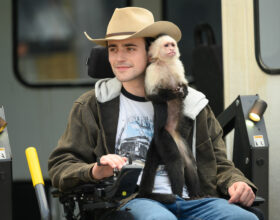Take a moment, if you can, to just catch your breath after seeing Fantastic Beasts: The Crimes of Grindelwald. With so much to see, hear, and learn about the wizarding world, it can be a daunting task in itself to be reminded just how far we’ve come in J.K. Rowling’s creation. Harry Potter and the Sorcerer’s Stone (2001) kicked things off, whisking us away to Hogwarts and instantaneously feeling the rush of imagination and the joy of belonging. Since then, the franchise has offered continual highs, from making young wizards vulnerable to danger (Goblet of Fire) to romance and character depth (Half-Blood Prince) to a deserved rousing conclusion (Deathly Hallows Part II)
The Crimes of Grindelwald dares to be distinct in its look and feel: and mostly for the better does it succeed. The film may go down as the most beautiful of the year—and potentially of the series. The team behind the sets, costumes, and overall visual tints added to the film cannot be complimented enough. Just when the fear of seeing everything in the Harry Potter universe is threatened, the trick always lands on us, the audiences, as we are struck—magically, if I dare say—by the visual elements. While the film struggles with the act of juggling too many less-than-developed storylines, a single strand lasted from the film’s predecessor, Fantastic Beasts and Where to Find Them: the invitation of feeling out of place, odd, strange. The universe offered by Rowling and director David Yates sees the world as a field of misfits strung together to help (and, sometimes, to hurt) one another. There are a slew of positive messages that deserve recognition, even if the overarching themes of witchcraft and magic may not be suitable for all families, making the film just shy of Dove approval.
Subscribe Lorem Ipsum





